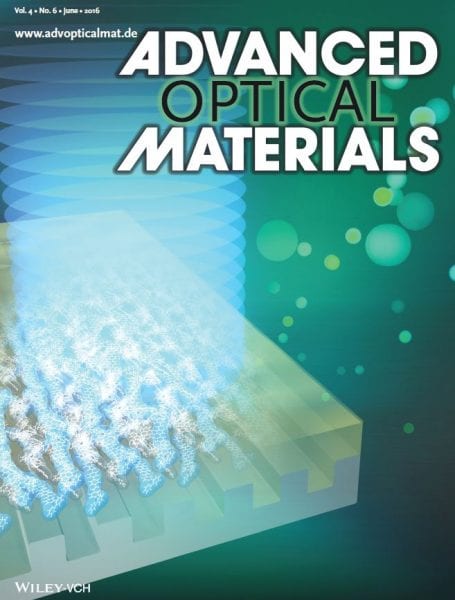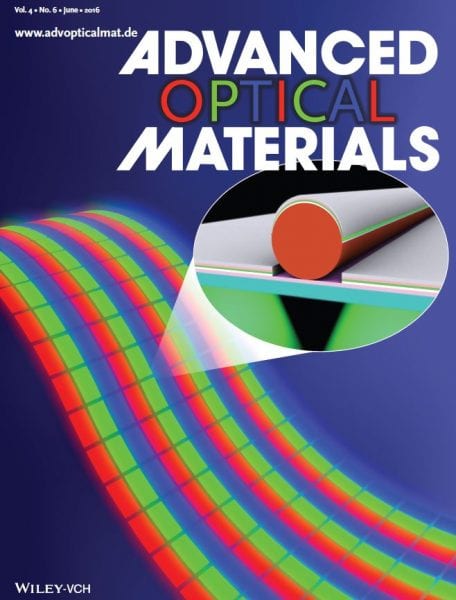The latest issue of Advanced Optical Materials is now available. You can sign up to access all Advanced Optical Materials articles right here!
These articles were highlighted on the covers of the Advanced Optical Materials June issue:
 Organic Thin-Film Lasers
Organic Thin-Film Lasers
A second-order surface-emitting distributed feedback organic laser using 4,4′-bis[(N-carbazole)styryl]biphenyl thin film as gain medium is fabricated and tested in the quasi-continuous-wave (quasi-cw) regime by A. S. D. Sandanayaka, C. Adachi, and co-workers. Their device, which is featured on the font cover, shows superior lasing properties with a low threshold and still operates properly at a repetition rate as high as 8 MHz. This represents the best performance ever reported among quasi-continuous-wave organic solid-state lasers.
 Supramolecular Assemblies
Supramolecular Assemblies
Highlighted on the inside cover is research by X. Ma and co-workers, who explore the functional C3-symmetric benzene-1,3,5-tricarboxamide-anchored diarylethene (C3-BTE) molecule. C3-BTE can evolve into ordered superstructures with tunable morphological properties via alternative light stimuli. It self-assembles into microrods via synergistic H-bonding and π-stacking interactions in toluene. After UV irradiation, most long microrods disassemble. While irradiating the sample with visible light, the microrods regenerate reversibly. In addition, solvent-induced morphological transitions are also observed when transferring C3-BTE between nonpolar toluene and polar or mixture solvents.
 OLEDs
OLEDs
A rapid, scalable, and noninvasive lithography is reported and presented on the back cover as a pixel patterning method for large-area flexible organic light-emitting diodes (OLEDs). Effective pixel separation is achieved by highly aligned printed organic fibers with diameters from several hundreds of nanometers to approximately 1 μm. This method, developed by T.-W. Lee and co-workers, suggests a possible replacement of photolithography for large-area patterning of passive matrix OLEDs, banks in active matrix OLEDs, and grid patterns in white OLEDs.

















